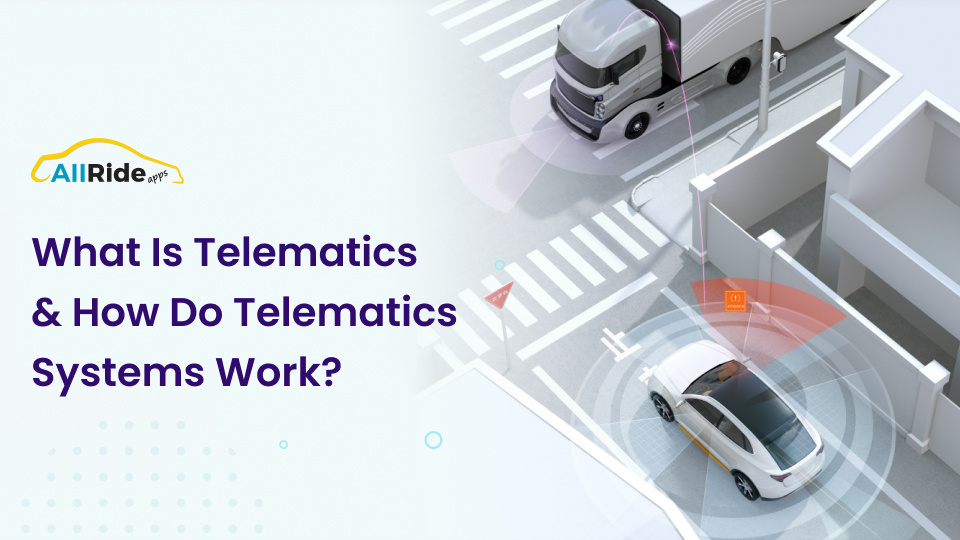
What Is Telematics & How Do Telematics Systems Work?
Within a short period, technological advancements have empowered fleets globally with vast abilities. What started as simple location data logging has now grown to fuel fleet uptime to levels never seen before. Currently, fleet owners and business managers can analyze data from various systems on the vehicle using telematics systems to make informed decisions about the fleet in real time.
In the following post, we dive deeper into vehicle telematics – one of the most popular technologies widespread in commercial fleets. Continue reading if you want to know more about how telematics systems work and what benefits they can bring to your fleet.
A Brief Guide To Vehicle Telematics
Telematics, in terms of commercial fleets, refers to the process of collecting, storing, and transmitting crucial data about remote fleets. Also known as fleet tracking and GPS tracking, vehicle telematics is now indispensable for medium to large fleet businesses.
Fleet operators can gain a comprehensive view of their fleet’s health, performance, productivity, and profitability.
The term “Telematics” is a compound word and is a combination of two words, i.e., telecommunications and informatics. At its core, it consists of a vehicle tracking device, which connects via the On-Board Diagnostics (OBDII) or CAN-BUS port through a wireless network.
These devices collect vehicle data and transmit it to a centralized server via a cellular network, which is analyzed and displayed to the end-user on software platforms.
How Does GPS Differ From Telematics?
GPS, or global positioning system, uses satellite technology to track asset location and displays the same over a computerized map. On the other hand, commercial fleet telematics collects far more data than asset location.
Fleet owners can now visualize and monitor delivery routes, fault codes, diagnostic information, idle time, engine performance, and vehicle mileage, and even provide OTA updates.
But how are these devices installed?
There are several ways to install telematics systems depending on the type of vehicle. Many modern-day manufacturers provide preinstalled telematics solutions or partner with telematics providers to offer a seamless experience to fleet owners.
In several instances, installing telematics systems requires splicing the device into the vehicle’s power supply. However, any step which requires splicing should be done only by professionals.
Additionally, there are also plug-and-play OBD devices available that can be installed without technical help.
How Can Your Fleet Use Telematics Systems?
Telematics systems have many use cases as they can integrate with almost all kinds of fleet management systems. A comprehensive FMS solution with telematics technology offers various fleets features, including.
- Vehicle tracking: Telematics systems use embedded or aftermarket GPS systems to track vehicle routes during delivery and assign the closest drivers to a new job. Henceforth, fleet managers can analyze the GPS data to suggest better routes for further deliveries.
- Asset tracking: GPS trackers installed on trailers and other non-motorized assets ensure that nothing goes missing or is stolen. Operators can use a fleet management solutions to route drivers to stationary assets, tag locations when making a delivery, and instantly send alerts to concerned parties.
- Predict downtimes: Fleet telematics also makes vehicle maintenance and fleet lifecycle management more convenient. By tracking and analyzing data from multiple sources, fleet owners and operators can predict vehicle downtimes and schedule preventative maintenance.
How Do Telematics Systems Work?
While many modern-day manufacturers include an embedded vehicle telematics system, several third-party hardware manufacturers provide such technologies to older fleets. Here is a brief overview of how these systems work.
- 1. A GPS tracker or GPRS receiver collects critical performance data about the asset, like position, speed, idle time, driver behavior, fuel consumption, etc., from various sensors installed on the device.
- 2. The same is transmitted via a cellular network to a centralized, wireless server. The flow of information is often managed by a telecommunications company.
- 3. A fleet management software stores all data related to the fleet and presents it in an easily-digestible manner. Here, users can view and export vehicle reports to gain essential insights about the fleet. It includes information like harsh driving, hardware faults, speeding incidents, and so on; then the fleet manager can use this data to schedule preventive maintenance.
Benefits In Fleet Management
Integrating vehicle telematics can help fleet owners achieve operational improvements in key business areas. Some of these benefits include.
- Increased visibility: One of the most common applications of vehicle telematics is improving fleet visibility. Organizations can better track the location and movement of powered and unpowered assets using GPS, and analyze all available data to improve fleet efficiency further.
- Better fleet safety: Since telematics systems continuously collect data from multiple sensors, they are an excellent way for fleet managers to gain insights into driver behavior. Based on this data, they can create training sessions to improve on-road safety. In fact, insurance companies also use vehicle information to assess risk factors and settle premiums and claims.
- Easier maintenance: Telematics hardware is often plugged directly into the vehicle’s onboard diagnostics systems and can pull engine data, like engine load, coolant temperature, and fuel consumption. Fleet managers can set up vehicle maintenance schedules according to this data and identify problems before they become serious.
- Improved cost-efficiency: Analyzing route performance and driving habits helps fleet managers make essential decisions regarding fuel efficiency. Operators can coach drivers on the best practices, like how to avoid vehicle idling and fuel slippage.
- Effortless compliance: Telematics systems allow fleet managers to record hours of service, streamline workflows, and track duty status reports, making it easier to maintain ELD Compliance. In addition, business owners can verify payrolls automatically, eliminating time wasted collating job sheets.
The Future Of Vehicle Telematics
Vehicle telematics started as a simple method of data collection and has moved on to become an indispensable part of modern-day fleets. With evolving technologies, telematics is moving from closed to open systems. With AI-based software solutions, fleet operators can integrate third-party hardware like electronic logging devices (ELDs), dash cameras, remote diagnostics, route optimization, etc., for greater efficiency and better business insights. In the future, we expect more excellent connectivity and communication between vehicles to pave the way for more accurate diagnostics.




